Search
Summary 
Loading AI-generated summary based on World History Encyclopedia articles ...
Search Results

Definition
Carolingian Dynasty
The Carolingian Dynasty (751-887) was a family of Frankish nobles who ruled Francia and its successor kingdoms in Western and Central Europe during the Early Middle Ages. The dynasty expanded from Francia as far as modern Italy, Spain, and...
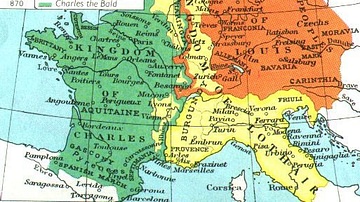
Image
Division of the Carolingian Empire in 843 & 870 CE
Map of the Carolingian empire following its division in the 9th Century CE. The Treaty of Verdun in 843 CE partitioned the Kingdom of the Franks into West Francia (green), East Francia (orange), and Middle Francia (yellow) and allocated them...
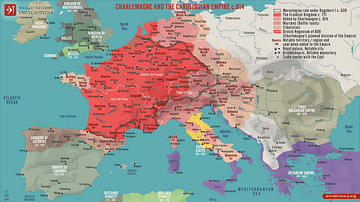
Image
Charlemagne and the Carolingian Empire c. 814
A map illustrating the rise and expansion by conquest of the Frankish Carolingian ("descendants of Charles") dynasty during the rule of the son of Peppin the Short and grandson of Charles Martel, Charlemagne (768 - 814 CE). Under Charlemagne...
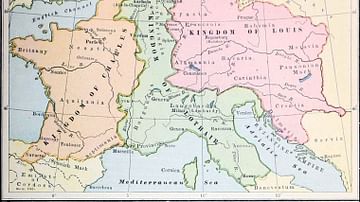
Image
Division of the Carolingian Empire
Map of the Carolingian Empire following its division in 843 by the Treaty of Verdun. At the death of Emperor Louis the Pious (r. 813-840), the Kingdom of the Franks was partitioned and allocated to three of his four sons. West Francia (orange...

Image
Division of the Carolingian Empire in 898
Map of the former Carolingian Empire in 898 following its collapse in 887 as a result of the deposition of Emperor Charles the Fat (r. 876-887). The kingdoms were claimed by various regional nobles, each of whom contested the imperial title...

Video
Charlemagne and the Carolingian Empire
This episode of Ten Minute History (like a documentary, only shorter) covers the turmoil in the Frankish Kingdom which led to the rise of Charles Martel who famously defeated the invading forces of the Umayyad Caliphate at the Battle of Tours...
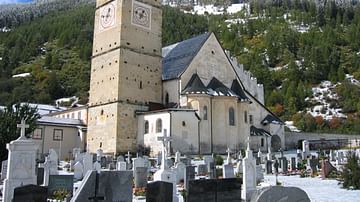
Definition
Abbey of Saint John at Müstair
The Abbey of Saint John at Müstair, located in the village of Müstair in Canton Graubünden, Switzerland, is an early medieval Benedictine monastery dating to the late 8th century CE that became an abbey in 1163 CE. It is renowned across Europe...
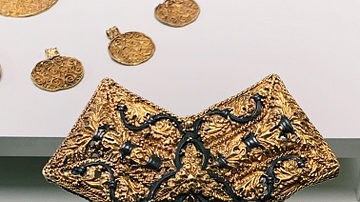
Image
Viking-Carolingian Golden Brooch
Golden Viking brooch originally from the Carolingian Empire, 9th century CE. Exhibited at the Museum of Cultural History in Oslo, Norway.

Definition
Franks
The Franks were a Germanic people who originated along the lower Rhine River. They moved into Gaul during the Migration Age, where they established one of the largest and most powerful kingdoms in Europe after the fall of the Western Roman...

Definition
Kingdom of West Francia
The Kingdom of West Francia (843-987 CE, also known as The Kingdom of the West Franks) was the region of Western Europe that formed the western part of the Carolingian Empire of Charlemagne (Holy Roman Emperor 800-814 CE) known as Francia...